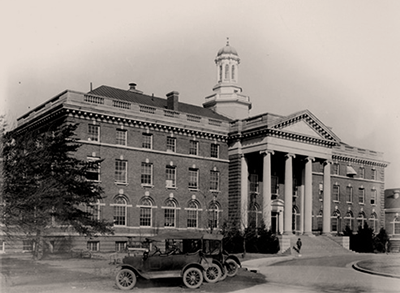History of the Walter Reed Army Medical Center Campus

The Walter Reed Army Medical Center closed in 2011.
By Act of Congress, the hospital was merged with the National Naval Medical Center in Bethesda, Maryland, and was redesignated “The Walter Reed National Military Medical Center."
The original Army medical center was founded in 1909 and named for Major Walter Reed (1851–1902), the lead researcher who discovered that yellow fever is transmitted by mosquitoes.
- During World Wars I and II and the Korean and Vietnam Wars, tens of thousands of active duty and retired soldiers were treated on its campus.
- The facility treated more than 750,000 patients each year, including veterans and their families.
- Since its origins, the medical care facility grew from 80 beds to a 5,500-room facility that covered more than 28 acres of floor space.
- The campus was closed in 2011 under the 2005 Base Realignment and Closure Commission process.
On November 17, 2016, the U.S. Army transferred 11.85 acres of the campus to Children’s National Hospital.
The portion of the site that was transferred by the U.S. Army to Children’s National includes the facilities below. Children’s National is proud to build on the legacy of this historic site. While each is being fully renovated, we are using each facility for a purpose similar in intent to its original use.
- Former Armed Forces Institute of Pathology (Building 54): Originally dedicated by President Eisenhower, it housed laboratories whose experts helped diagnose rare and complex diseases. Army scientists established an extensive biosample library—a valuable resource that led to many advances. The new use for this building is research-focused, including work focused on rare diseases originating in childhood.
- Former U.S. Army Medical Ward (Building 52): Originally used by the Army as a medical ward, and more recently used to treat soldiers on an outpatient basis. This structure is now the only original medical ward remaining on the campus. Children’s National will use it for pediatric outpatient care.
- Former Post Theater /Uniformed Services Medical School (Building 53): Originally used by the Army for educational presentations, Children’s National plans to restore this 300-seat conference theater for ongoing medical education sessions and community events.
- Former Rumbaugh Garage (Building 3): This garage will continue to be utilized as a garage. The landscaping will be enhanced, with cultivation or replacement of the cherry trees that were previously a distinctive feature on the terrace level of the research building. The top level of the garage will host a solar array and generated power will be donated back into the power grid for distribution to low and moderate income DC residences.



